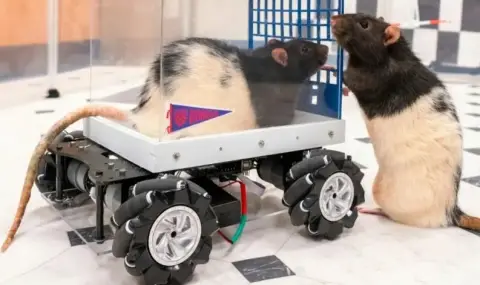Scientists from the University of Richmond, who study behavioral neuroscience, taught rats to drive cars. The first car for rodents was made from a plastic bulk container. Driving on the rat's side turned out to be pretty easy: the rat just has to climb inside and grab the little wire that controls the gas pedal.
In later versions of the "rat car" two more control wires appear. And so that the journey is not aimless for the rodents, a handful of crunchy treats await them at the end of the journey.
Over time, the design of the car became more and more complex. Rat Car II, created with the involvement of the Faculty of Robotics, uses special wiring and wheels, and the control levers are made with the ergonomics of rats in mind.
When conducting the experiment, scientists noticed that these rodents, which were first placed in a more complex environment, with toys, free space and other rats, learned to drive faster than those living in ordinary cages. This confirms the assumption that housing conditions influence the neuroplasticity of the brain.
But the more interesting thing is that rats love to drive, and the reason is not just the tasty reward. Two out of three trained rodents choose a longer and more scenic route by car instead of a shorter one on foot and also show excitement and positive mood. A raised tail indicates high levels of dopamine, a response typically seen in rodents given opioids.
Working with rats helps scientists understand how positive experiences shape the brain and how they differ from negative ones, and how they generally affect motor vehicle drivers. In addition, animals provide insight into the neural principles governing everyday human behavior, not just when in the car.
„Instead of pushing buttons in search of instant gratification, they remind us that planning, anticipating and enjoying the journey can be the key to a healthy brain.“ See more in the video.
